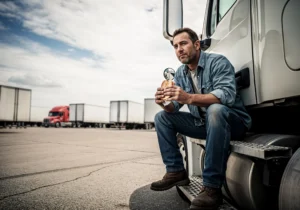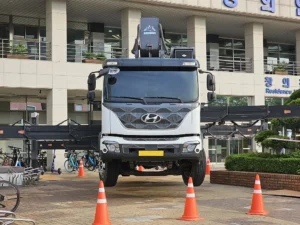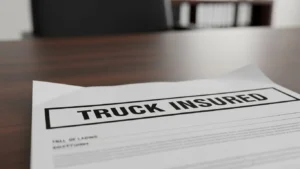On June 6th, the National Secure Your Load Day is commemorated as a safety campaign about the risks of unsecured loads
An unsecured load poses a risk to both the driver and other vehicles sharing the road. Annually, on June 6th, the National Secure Your Load Day is commemorated, a safety campaign founded in 2004 by Washington resident Robin Abel. After endangering her life and her daughter’s due to an unsecured load, Abel decided to raise awareness about the importance of always transporting cargo safely.
This national day serves as a significant reminder of the safety required for road travel and the responsibility each driver holds for their vehicles and the cargo they carry. Connecticut Department of Transportation Deputy Commissioner Laoise King reminds drivers that taking simple steps to secure loads can prevent accidents and even save lives, as even the smallest item can cause fatal accidents. Spreading the importance of load securing and practicing safety measures is an ongoing task.

According to statistics provided by the Washington State Department of Ecology, unsecured loads cause over 300 accidents annually in Washington and account for up to 40% of roadside litter. This statistic remains consistent year after year, with these collisions resulting in 16 injuries and tragically one death in 2023.
In 2023, the Washington State Patrol (WSP) and commercial vehicle enforcement officers stopped over 5,000 motorists for improperly secured loads. Fines for failing to secure loads range from $50 to $5,000, and drivers whose unsecured loads cause damage could face legal action and jail time.
To prevent accidents, the WSP emphasizes the importance of properly securing items in vehicles, including the use of tarps, ratchet straps, and cargo nets. As part of a campaign, the Department of Ecology is funding the distribution of load securing equipment and products for safe cargo securing.
How do I know if my load is properly secured?
An unsecured load can shift and cause serious accidents. Properly securing a load requires knowing the maximum load capacity that can be applied to a piece of equipment (WLL) and the strength of load securing devices.
The FMCSA proposes the following method for calculating the necessary control for a load: the total amount of cargo multiplied by 0.5G, meaning for a load of 10,000 pounds, 5,000 pounds of securing would be necessary to control the load.

Load securing requirements
1. Immobilize
Cargo must be securely immobilized by appropriate strength structures (bracing timbers, shoring bars, lashings).
2. Restrain
Cargo items that can roll must be restrained using chocks, a cradle, or other equivalent means.
3. Prevent Shifting
Cargo must be placed in direct contact with each other or prevented from shifting towards one another.
The FMCSA has established specific securing requirements for different types of goods; becoming familiar with this information can prevent accidents and save lives. When transporting goods, it is crucial to take responsibility for securing the load through appropriate safety measures. On this National Secure Your Load Day, raise awareness about the risks of driving with loose loads.


Truck drivers are at high risk of developing diabetes
About 11% of the adult population meets the criteria for prediabetes, and there is a particular group at high risk: truck drivers. Diabetes rates in

Starting in trucking: required permits, registrations, and compliance
Are you a new carrier? This is what you need to know about permits, registration, and compliance. The trucking industry can be quite challenging for

Alberta Clipper Brings an Early Polar Blast: A Critical Alert for Drivers
The Alberta Clipper is sweeping across the country with fast-moving Arctic air, sharp temperature drops, and dangerous road conditions that demand heightened attention from all professional drivers.

American manufacturers trigger truck “dumping” investigation
Foreign trailer manufacturers under investigation for alleged “dumping” in the U.S. The U.S. truck market is at the center of a trade dispute. After domestic

ATRI Warns: Litigation Is Rising Across the U.S. Trucking Industry
A new report from the American Transportation Research Institute (ATRI) reveals how escalating litigation, higher legal costs, and mounting insurance pressures are reshaping the U.S. trucking industry. The findings mark a critical moment for motor carriers, insurers, and logistics stakeholders who must understand the changing legal environment — and the increasingly strategic role of strong insurance partnerships.

FMCSA says no to hours-of-service exemptions
FMCSA rejects two requests for exemptions to hours-of-service rules for commercial drivers. The Federal Motor Carrier Safety Administration (FMCSA) has denied two exemption requests related
